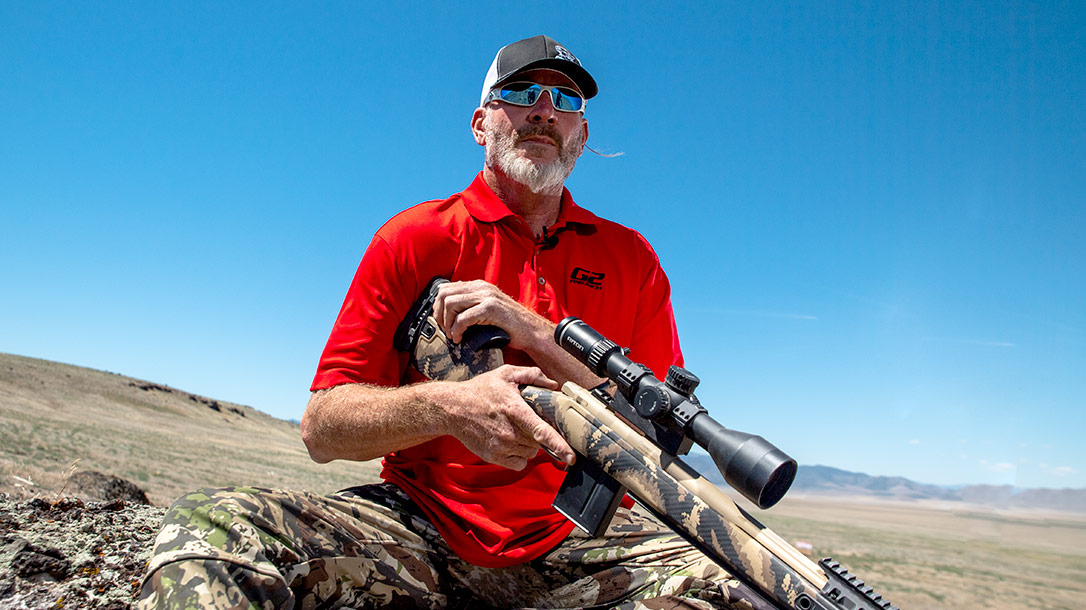Always give credit where credit is due. There are many incredible shooters out there, precision focused or otherwise. That being the case, there are a few that transcend the ranks in the shooting world—like Charlie Melton. This happens not because they are specially gifted—a prodigy so to speak—but because of the experience they possess, typically garnered from hard work, hard knocks and refusing to quit.
Charlie Melton Exemplifies a Hero
Charlie Melton is “one of those”—the few who have truly been through the gauntlet, executed, experienced, learned from and adapted to the situations and elements that many of us train for but will likely, and thankfully so, never face. Experienced is one word you could use to describe Charlie Melton, but that drops a veil of understatement over him and is almost insulting if not demeaning.
Charlie is a retired SEAL sniper. His credentials include 26 years as a Navy SEAL with teams 2 and 5, a Bronze and Purple Heart recipient, Sailor of the Quarter, Sailor of the Year for all SEAL Teams, and Runner-Up for PACIFIC-FLEET SOY. He was Master Training Specialist, and retired as Chief Petty Officer in 2015. He also headed the SEAL sniper school at Camp Atterbury, developing the curriculum that our elite operators would follow.
Advertisement — Continue Reading Below
Ballistic Precision was honored to shoot with, learn from and be trained by Charlie Melton. While we could pretend we have some exclusive access to Charlie, we don’t. In fact, anyone can train under him through Charlie Mike Precision, the firearms training school that he runs. If you can get a few buddies together, he’ll take you through and teach you what he learned through his experience as a frogman. As a side note, keep in mind that Charlie trained warrior-elite greats like Marcus Luttrell and Chris Kyle, but you’ll never know that.
Crash Course
Our abbreviated session with Melton revealed much about what you can expect from one of his courses. It can be summed up in one word—fundamentals. Yes, we hear it all the time from the bevy of capable trainers out there, but oddly in some way, I didn’t expect to hear that from Charlie Melton, and not with such insistency. Why? Probably because it sounds so—well, boring coming from a SEAL sniper. As an elite level sniper, surely it must be more high speed, low drag than that. Right?
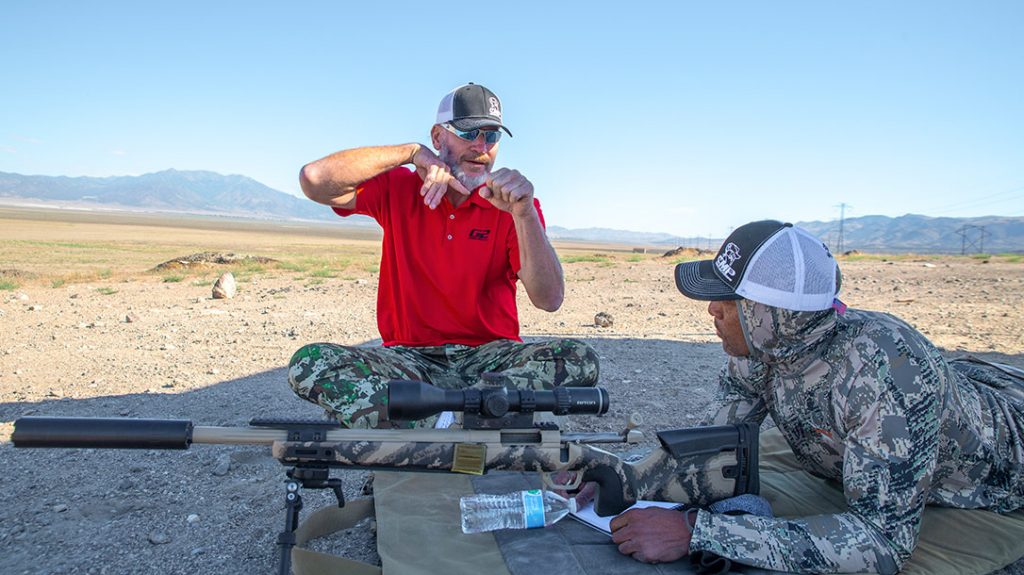
Advertisement — Continue Reading Below
Under his training, students don’t move on to other challenges until they master the basics, nor should they. This just further underlines how important the fundamentals are for all of us as precision shooters or otherwise. A man who has been in theater, been there, done that, in the true mix of it, completely underwhelmed me with that answer. So, it’s the fundamentals we practice.
After a quick 100-yard zero and a couple of groups to let Charlie feel comfortable that I have some idea of what I’m doing, we go out to 500 yards, where I send Hornady’s excellent 6mm Creedmoor 103-grain ELD-X’s with confidence. Yes, ELD-X, not the ELD-M you’d expect. That’s mainly because with the ammo shortage, Hornady was able to send out the X’s in short order. But I came to find through discussions with Hornady that the Xs are pretty much on par with the Ms. I assumed otherwise.
Taking it Farther
After easy 500-yard impacts, Charlie asked if I wanted to shoot at a mile. After much consideration, I replied with a “Yes” some 40 milliseconds later. So I spun up the turrets on the Riton 3-24×56 Conquer X7 optic and sent it. Twenty-one mils is roughly what it took to hurtle the 103’s to a mile, coming from an 18-inch barrel on a Gunwerks custom rifle. The CGS Group Hyperion QD suppressor hissed with each press of the trigger, allowing Charlie to sit comfortably, spot, and give commands and corrections without hearing protection. I knew the retired SEAL was testing me to see if I’d follow his lead, and I did with much success at a mile with several three- to four-round strings of back-to-back impacts on a 36-by-24-inch plate.
Advertisement — Continue Reading Below
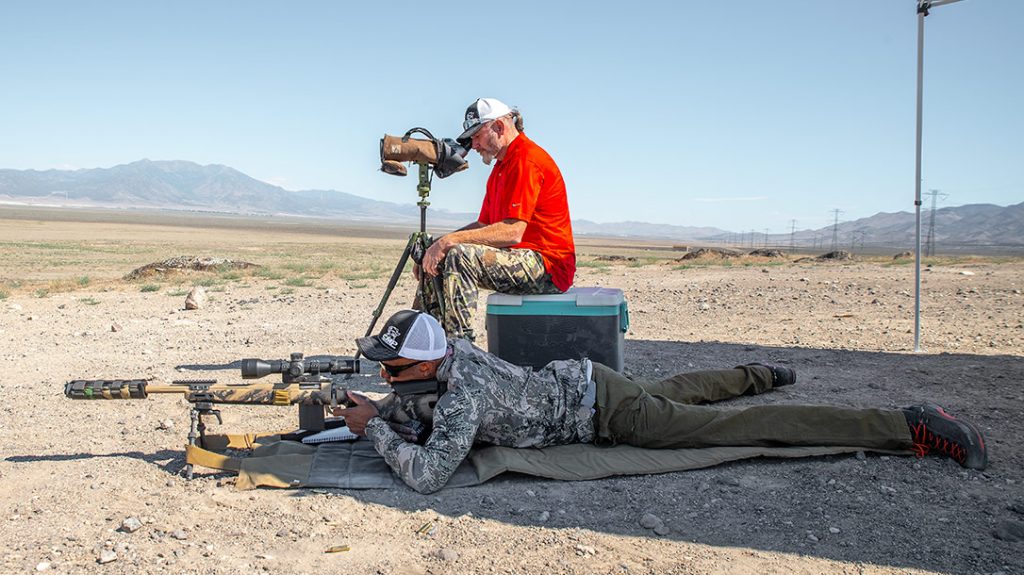
The next day, Charlie Melton and Jeremiah Alexander, of Riton Optics, rigged up a mover from a wagon, paracord and some 2x2s. Rocks were added to the wagon for effect, along with a 23-by-35-inch silhouette to shoot at. This “low-budget mover,” as we referred to it served us well and allowed Charlie to get me past my lack of confidence in shooting movers. After I understood what he was asking of me, I was able to place shots very close to each other on a walking speed target at 200 yards.
Chatting With Charlie
Charlie is passionate about sharing the craft as he learned it and taught it while in service. But his passion doesn’t end there, it overlaps with a passion to cook. Yes, Melton is as qualified in the kitchen as he was when he was deployed. The guy can straight cook, and I was fortunate to share in several meals he prepared.
Advertisement — Continue Reading Below
After a meal of inch-thick ribeye steaks, bacon wrapped corn on the cob and cheese-crusted broccoli that Charlie expertly prepared, he and I sat and talked.
BM: Tell us a little about your military history.
CM: I grew up in Macon, Georgia, joined the military when I was 19 years old, went to boot camp then A school and straight into SEAL training. I became a SEAL, was one for 26 years and retired in 2016.
Twenty-six years, that’s a long time.
It was awesome! If I could get a new body, I’d do it again.
Advertisement — Continue Reading Below
Tell us about your time at Camp Atterbury.
Our East Coast SEAL super school was always run there; there were two separate schools, the East and West coast. I was on the East Coast when I went through sniper schools. I went through the school at Attebury in 1994, and it was the best school ever. So, fast forward 15 years later and I ended up being the senior chief of the West Coast school, and we combined the schools. We would do classroom stuff on East and West, and would come together at Atterbury for stalking, shooting and all the skill sets.
Is there a rivalry between East and West coasts?
Oh yeah. Always.
Do you feel like the rifles available now are that much better than what you had access to when you were in service?
The gun industry has come so far, basically we modified our weapons on our own. We had to invent our own stuff. We had decent guns for back then, but now the rifles are so much smoother. I’m not saying you can’t take a cheaper rifle and hit stuff, but the precision of rifles has definitely gotten better.
Advertisement — Continue Reading Below
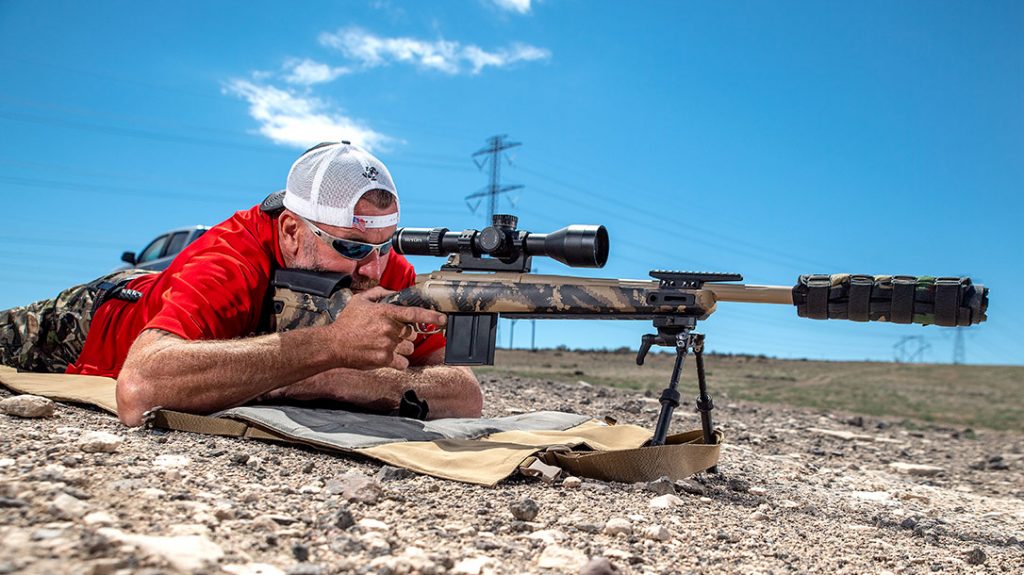
What brand chassis do you like?
I like the MPAs.
What types of rifles will you build?
I’ll offer a hunting-type rifle and a precision chassis type.
Advertisement — Continue Reading Below
Who taught you how to shoot?
I was always into guns and blowing stuff up. My grandpa and uncles all hunted and shot guns all the time. I got my first gun when I was 4 or 5, a single-shot .22. My uncles and grandpa taught me how to shoot, and it was mostly Kentucky windage, but they had a couple of the principles down like trigger control and aim small, miss small. Yeah, me and my brother would go hunting by ourselves at like 5 or 6 years old.
Did you know in advance that you wanted to be a SEAL?
My dad did 8 years in the Navy, and he had a buddy that would come over when I was young and he would tell these stories, and supposedly he was a SEAL. Come to find out he wasn’t, but it inspired me, so I knew I wanted to be a SEAL or Special Forces or something since I was 8 years old.
Did you ever want to quit?
Nope. Not once. I’m a weirdo. I grew up pretty poor and had to work for a living. Actually, I enjoyed BUDS. I had a good time. It was fun.
Advertisement — Continue Reading Below
Was the first time you were exposed to a serious precision rifle at sniper school?
Once I got on my first team, yes. I wanted to be a sniper when I was in BUDS.
Is there a portion of sniper school that was your absolute favorite?
All of it. I loved every part of it—the fieldcraft, stalking, shooting, unknown distance. Sniper school is my favorite school I’ve ever been to.
What’s the most notable shot you’ve ever made?
Most notable? I shot a guy at like 60 yards with a .50-cal. That’s my most notable.
Longest shot…
On paper or combat?
Both.
My longest shot in combat was like 300 or 400 yards. Because most of my operating was done in an urban environment. And my longest paper shot was 5,025 yards.
What’s your favorite caliber?
What do you like about teaching?
I like interaction with people, and my favorite thing is finding someone who is having trouble with something and being able to convey the information that you’re teaching to that person and seeing that light bulb come on and have them get it. It’s very satisfying to me.
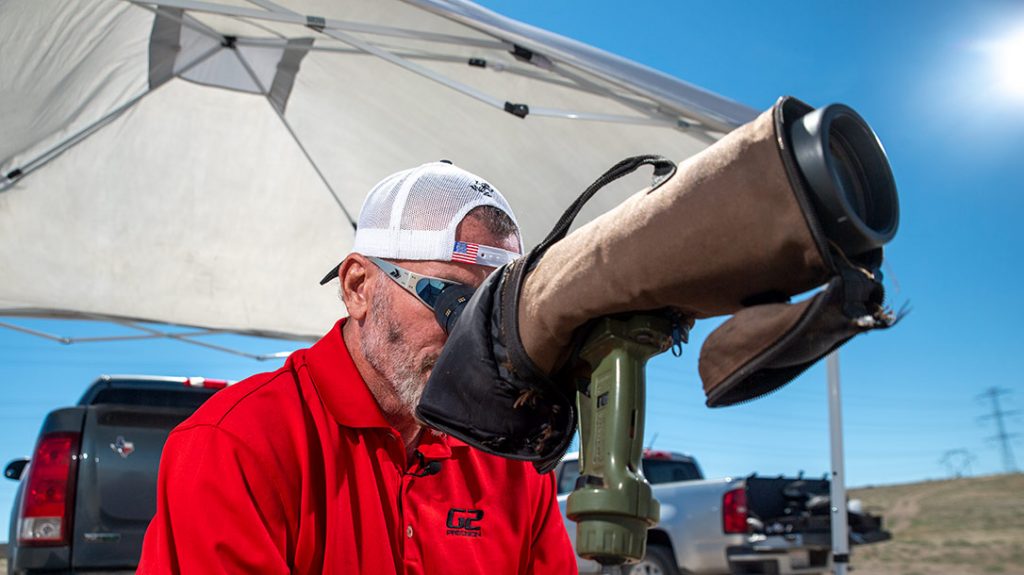
Do you think the average PRS-style competitor is as good as your average military sniper? Not fieldcraft, but shooting purposes.
You mean all branches of the military?
Yeah.
I would say they could probably compete in the shooting aspect with some snipers. Definitely not a SEAL sniper. There’s some good shooters out there. Country boys—they can shoot.
Okay. You’re a foodie. You love to cook. Where’d that come from?
I do love to cook. I used to help my mom and grandma cook all the time, and they taught me a lot. And, my dad and uncle grilled and smoked stuff. In the military I traveled all over the world, and everywhere I went I’d always have someone teach me to cook a dish from that place. I enjoy cooking, feeding people and making them happy.
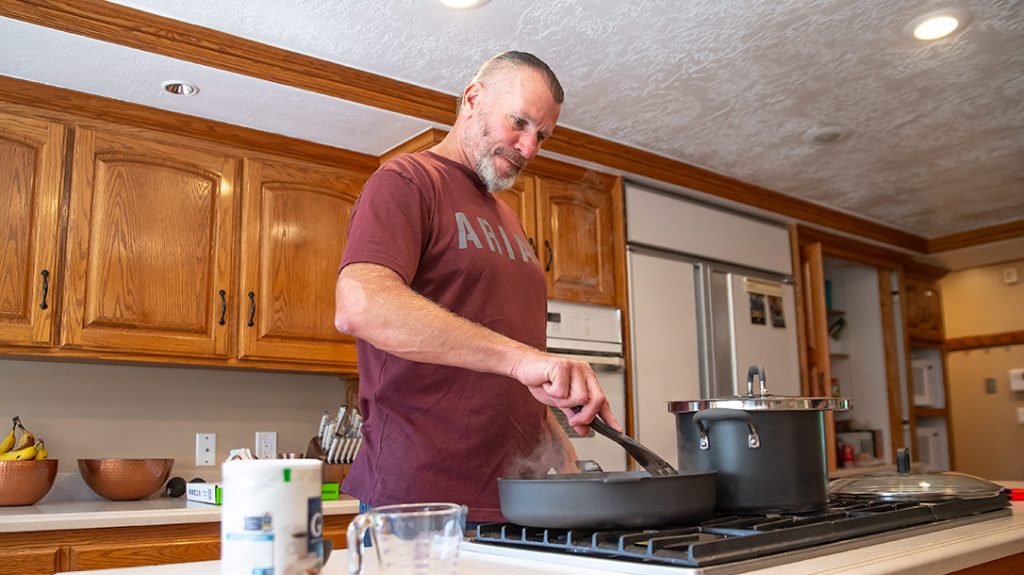
What’s your favorite food?
Shellfish. I’m a huge shellfish fan. Whether it is lobster, crab, crawfish, oysters, shellfish is definitely my favorite…and steak (chuckles).
What’s the most difficult dish that you prepare?
Crawfish Étouffée. It’s a crawfish dish with rice and a sauce, but it takes about four hours to prepare to do it right. I learned it from a guy in Louisiana—his grandma’s recipe.
The CMP logo. What is it? What’s the inspiration?
CM stands for Charlie Mike, in the military that means continue mission. Basically it means never quit, and continue on until you get the mission done. The star stands for independence and liberty. The actual logo itself is a skull. It stands for unachievable mortality. It has a bandana on there, and that stands for protection and humility. The cowboy hat stands for walking tall and striding with confidence. The bone frog stands for the SEAL team, which represents brotherhood and loyalty. The crosshair on the eye stands for focus. So all of the things put together is kind of the principles of being a warrior.
There’s a lot of meaning there.
I thought long and hard on that and came up with the logo. And it’s funny, you’re the only person to ask. I mean people ask what the CMP stands for, but nobody has asked about the logo with the cowboy hat.
Continue Your Mission
It’s interesting to be in the presence of such an accomplished warrior, sniper and precision shooter. After three days, I can tell you that Charlie Melton wants to contribute to the precision shooting community more than anything—both through his rifle instruction and through his amazing ability with food. He spends a lot of time on the spotting scope and beside the shooter giving guidance and feedback, instead of on the rifle saying, “Watch me.” If you want to experience what I did (minus the grub).
This article was originally published in the Ballistic Magazine August/September 2021 issue. Subscription is available in print and digital editions at OutdoorGroupStore.com. Or call 1-800-284-5668, or email subscriptions@athlonmediagroup.com.
